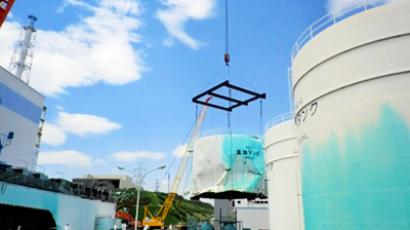‘Nuclear-test monitoring works like anti-burglar system’
Boasting a complex monitoring system that can detect virtually any natural or man-made disaster, the Nuclear-Test-Ban Treaty should be fully ratified in the near future, the CTBTO’s executive secretary Tibor Toth told RT.
With the introduction of the Comprehensive Nuclear-Test-Ban Treaty Organization, the number of nuclear tests conducted in a decade shrank from 400 to single digits. At the moment the treaty is not yet in effect, but with 80 per cent of world’s countries having ratified it, Toth vows to work with each of the nine remaining countries “one by one.”“The main idea is to make sure the law of no [nuclear] tests is respected by everyone and not just in the words of some bureaucrat,” Toth explained. “It is a give-and-take. Countries are giving up some of their sovereignty by providing verification data, but they are taking a lot. They can be sure that this is the right behavior. In complicated situations like the Cuban missile crisis of 1960s it makes the difference, because then it is important that the countries trust each other”.Toth expects Indonesia to ratify the treaty in a year, and last week Israeli ministers declared they were “looking constructively” at the idea of ratification, while the next US election, Toth hopes, will help in persuading America to join.Meanwhile, the sensitivity of the monitoring system at the preparatory commission’s disposal at least makes it impossible for a nuclear test to pass undetected anywhere on the planet."The system works like an anti-burglar system. We are listening to the noise of those who are committing the wrong step that is nuclear testing both on the ground, in the oceans and taking air samples. Altogether there are some 400 facilities around the world operating around the clock. And we are collecting data from 90 countries, so it is not based on one input".Hosting some 36 facilities of the world’s 380, Russia remains one of the biggest contributors to this complex monitoring system. It was the Russian station based in Petropavlovsk-Kamchatsky that first detected the aftermath of the Fukushima nuclear disaster.Predicting this kind of event is in fact another use of the monitoring system, according to Toth.“The whole Fukushima incident started from an unprecedented magnitude 9 earthquake. We did detect it. In fact it was our station that contributed to the tsunami warning, issuing the data on which it was based. We have hydro-acoustic stations, which are helpful for predicting tsunamis. We have what are called infra-cell stations, which can predict [erupting] volcanoes – Kamchatka for example. In addition to our monitoring, after March 11 [the date of the Fukushima incident] we were predicting where the radioactive dispersion would go 72 hours ahead. Our predictions were correct 95 per cent of the time. So the information taken together can be extremely helpful with catastrophe situations like Fukushima,” Toth concluded.














